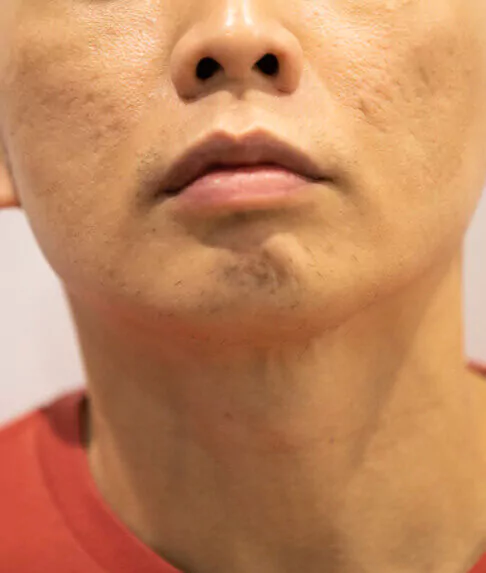
Hyperpigmentation is a condition where a portion of skin appears darker than other surrounding areas of skin due to excess melanin in the affected areas. Melanin is the pigment that gives color to the skin. Sometimes hyperpigmentation can appear around the mouth (perioral) and eyes (periorbital). “Peri” is a prefix from Greek meaning “around” or “surrounding”; oral relates to the mouth and orbit refers to the eye. Darkening of the skin around the eyes or mouth may occur for a variety of reasons, including potentially sun exposure and inflammation. Other factors can contribute to the appearance of skin darkening that are unrelated to pigment. Perioral or periorbital hyperpigmentation are usually benign. Change in the color of the lip itself can be caused by medications or certain illnesses and should be assessed by a physician.
How is Perioral or Periorbital Hyperpigmentation Identified?
Periorbital hyperpigmentation (POH) or perioral hyperpigmentation is identified based on visual assessment by a physician. Sometimes as a person ages, the eye area can appear more “sunken in” as fatty deposits shift and the skin texture changes. This can produce a shadowing of the eye area that should be distinguished from true pigment change.
What Causes Periorbital / Perioral Hyperpigmentation?
The same factors that cause other forms of hyperpigmentation may also contribute to Periorbital/Perioral hyperpigmentation. These facial areas are exposed to UV radiation that can lead to activation of melanocytes and production of melanin. If too much melanin is deposited, persistent skin darkening may be seen.
While friction is linked to some forms of hyperpigmentation, it probably isn’t a significant factor in Periorbital/Perioral hyperpigmentation. However, individuals who continuously rub the areas around the mouth or eyes can create irritation and inflammation in these areas. Those with allergies may find that the skin around the eyes becomes inflamed. Part of the body’s response to inflammation involves an increase in melanocytes and more melanin production. Usually, this discoloration has a brown appearance.
Finally, the area around the eyes is rich in tiny blood vessels. Depending on the size of these vessels and where they reside in the skin, they may give the skin a darkened appearance that tends to be blue/black or purplish hue. This so-called vascular hyperpigmentation is different than most other forms of hyperpigmentation. It is very common for vascular hyperpigmentation to occur along with melanin-based hyperpigmentation in the eye area. Swelling around the eyes-which can have a variety of causes, including allergy, illness, stress, or lack of sleep-can worsen the appearance of vascular hyperpigmentation.
Is Periorbital / Perioral Hyperpigmentation Dangerous?
Most cases of Periorbital/Perioral hyperpigmentation and the factors that contribute to skin darkening are usually not dangerous. In fact, darkening is often attributed to natural changes that occur with skin aging. Typically, skin darkening develops over time. Sudden changes in skin color and changes in the color of the lip itself should be evaluated by a doctor.
Periorbital / Perioral Hyperpigmentation in Brief
Sometimes hyperpigmentation or excess pigmentation can appear around the mouth (perioral) and eyes (periorbital). Darkening of the skin around the eyes or mouth may occur for a variety of reasons, including potentially sun exposure and inflammation. Other factors may contribute to the appearance of skin darkening.
Periorbital / Perioral Hyperpigmentation Fast Fact
According to one analysis of individuals with periorbital darkening, only 17% of individuals had darkening that was mostly caused by melanin. About half of affected individuals had visible blood vessels in the area, according to the journal Pigment International.
Did You Know?
Patients are often bothered by hyperpigmentation around the eyes, but cosmetic coloring around the eyes dates back to ancient Egypt. There, royalty used a substance called kohl to outline the area around the eyes and enhance their appearance.
Resource:
https://www.ncbi.nlm.nih.gov/pmc/articles/PMC4756872/